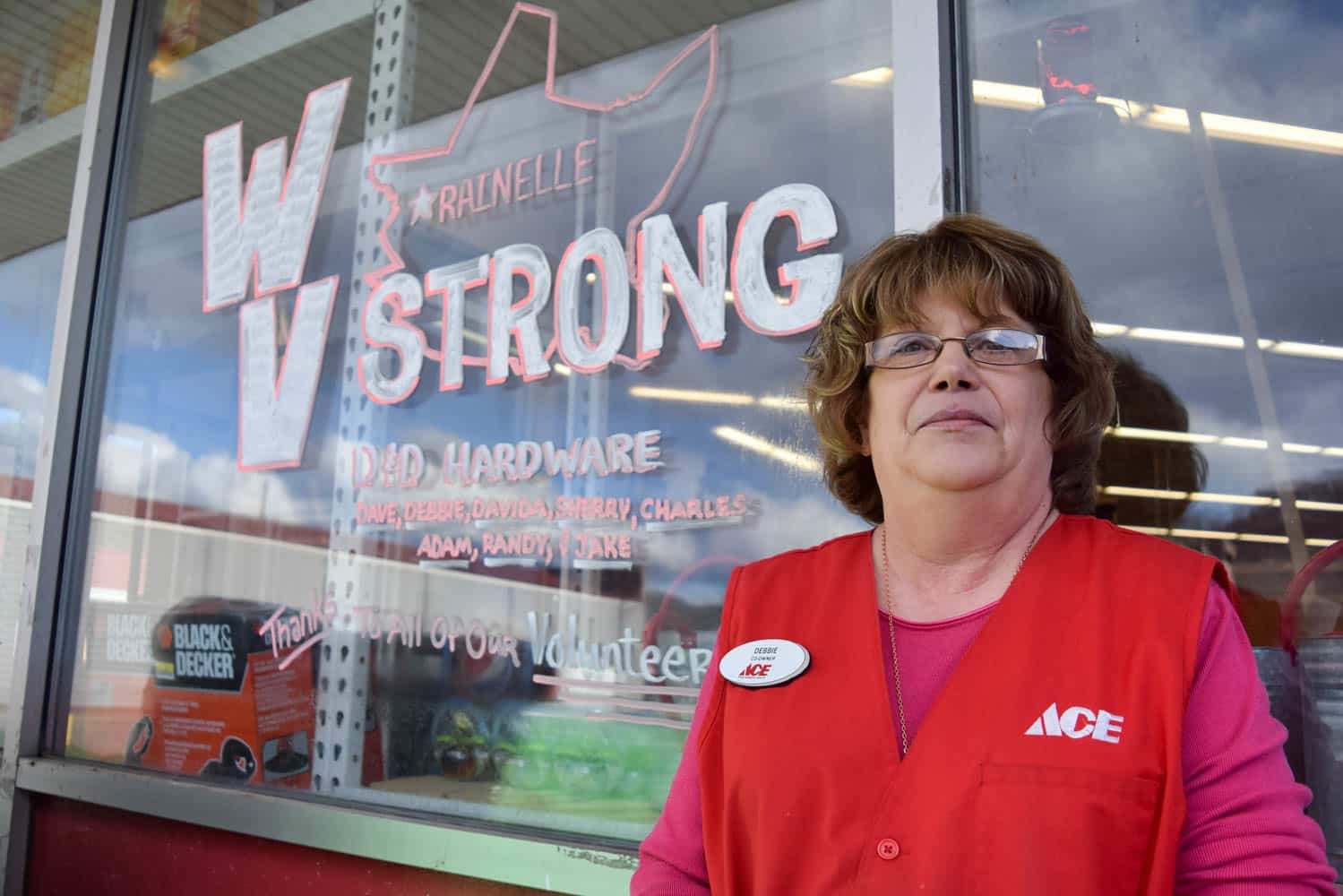Part 1 of 4: Remembering the Flood
The town of Rainelle woke up Thursday morning of June 23, 2016 to what looked like a normal rainy day. By that afternoon, there were signs of trouble. Rainelle would be one of several towns in southern West Virginia to experience one of the state’s deadliest floods. Nearly 8 inches of water fell within 24 hours.
With 3,000-foot mountains to every side, two creeks — Sewell Creek and Boggs Creek — and the high Meadow River backwashing through the town’s trestle, Rainelle had nowhere for the rain to go. Most businesses and homes in the town of 1,500 are within blocks of each other following along the creeks.
“This town has always flooded. They call us ‘the bowl,” Rainelle mayor Andrea Pendleton said. “All the water comes off the mountain, and this is the bowl where it collects.”
But this flood was different.
More than 100 homes and businesses were destroyed beyond repair. Hundreds more were heavily damaged. In some buildings, the water level was recorded cresting at more than seven feet.
The water started to rise on that Thursday afternoon on June 23, 2016 and did not drain until Monday. Four people died in Rainelle’s flood waters that Thursday evening and into Friday morning. Across West Virginia, 23 people would lose their lives to the water, and more than 1,200 homes and business would be damaged.
At the first anniversary of the floods, we talked to first responders during the flood, people who lost their homes and loved ones in the water and community leaders who are still working toward restoring the peace and hope in Rainelle.
In this first of four stories we hear from the rescuers.
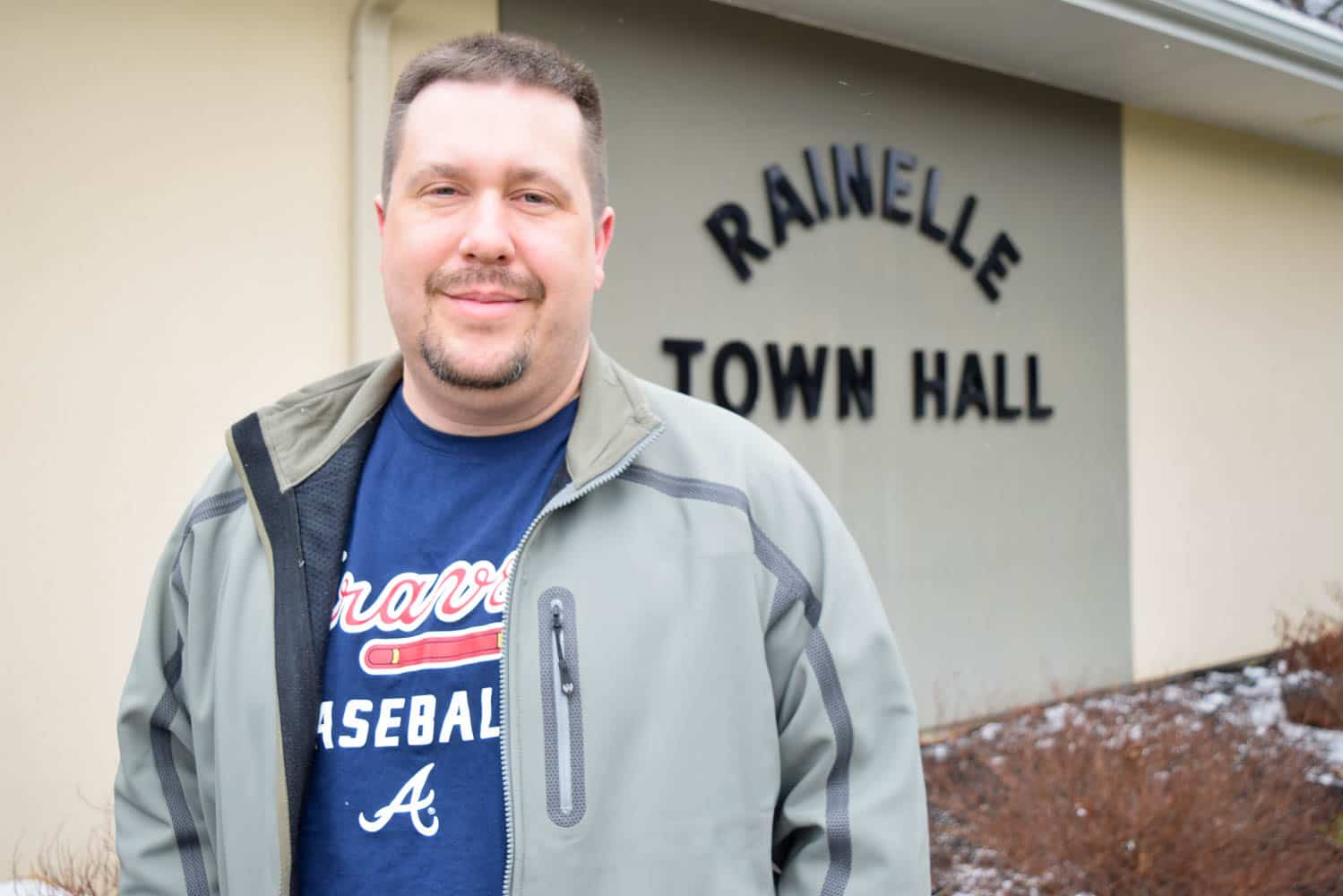
“When you look at it on the scope that it was across this whole region and something that had never been experienced before, I think everything was done as best as it could.” – Shawn Wolford
Shawn Wolford arrived at the fire station Thursday morning and spent some time doing paperwork. Wolford was Rainelle’s floodplain manager and assistant chief for the Rainelle Fire Department.
“We knew that there was gonna be a pretty substantial storm coming, but there wasn’t really any expectation it was going to be anything major.” It had been raining all night and kept coming down.
By noon, the fire department began to receive calls about water on roads around the edge of town. Wolford drove to one of the calls, which happened to be close to where he lives. Just two hours after he left his home that morning, he saw a wall of water on the road that he had never seen before.
“Within a very short time frame, we went from having no water, to people starting to request help getting out of their houses,” he said.
The town has seen some flooding before — Wolford remembers four floods during his time at the department from the 1990s to now. What Wolford saw in Rainelle by 2 p.m. that afternoon didn’t appear too different from previous floods, but the water level was still rising.
“The rain would kind of slack up for a little bit, but then it would just come down heavier than before,” he recalled.
The first thing Wolford had to do was take a firetruck out to the road that enters town because the rescue crew he called in from Alderson couldn’t get in through the high water. An Army Reserves truck joined their squad and soon they were rescuing people from homes in downtown Rainelle.
In past floods, water had made its way up as high as 6th or 7th Street. This time, Wolford and his crew were rescuing people all the way through 10th Street. The water, “would have been over people’s heads if we would have gone out in the water, and I think that’s when we realized this is something way beyond what we’ve experienced here before,” he said.
The last person Wolford’s team rescued in the firetruck was a 92-year-old woman on 10th Street. She told them to take care of her neighbors before getting her, so they rescued some others on her street before going back for her. She couldn’t walk very well, so they backed the truck up to her front porch.
It was just then, they realized, they now had to move people from the evacuation shelter at the fire station — it was flooding too.
It had been common practice for the firefighters to take people to the firehouse for shelter during an evacuation. The fire house sits on a little hill and it never had water issues. By about 7 p.m. water was coming in, and there were nearly 90 people at the fire station. The next few truck rounds took people up to dry, higher ground on the plaza outside of the shopping center.
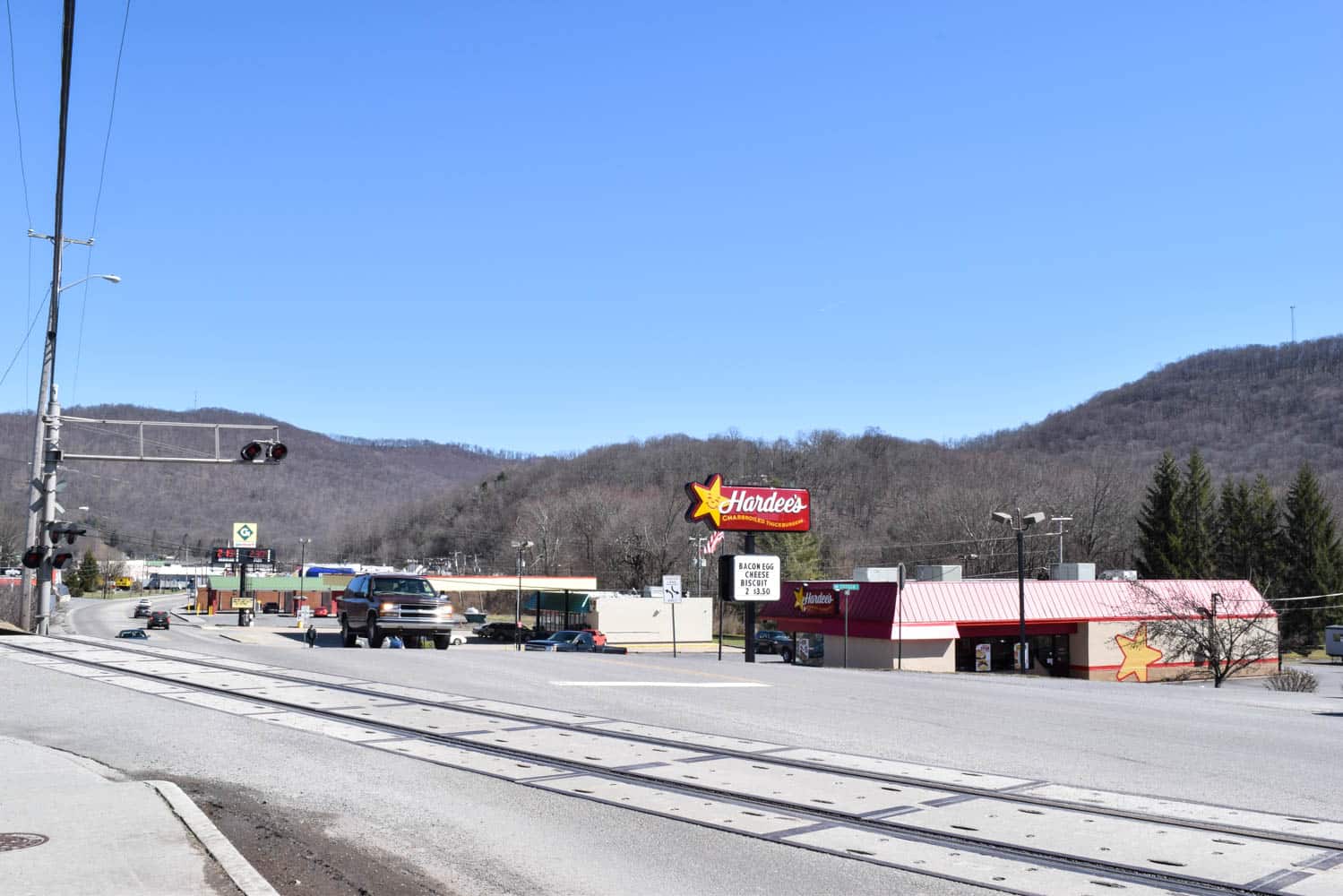
For the rest of the night the Army Reserve truck was the only official rescue crew operating. Even with its tall tires, the water had covered the truck’s headlights and the truck had started to take in water. Wolford got on top of the cab of the truck and used a flashlight to guide the driver around.
As they dropped off their last group of evacuees, Wolford’s team was greeted by fire rescue crews from out of state. Departments from Virginia had sent people into Rainelle and started performing rescues overnight.
It was a long rescue for Wolford, “I didn’t change or anything,” Wolford said. “I was soaked from being in the floodwaters until probably 11:30 Friday night and it started Thursday.”
Over the weekend Wolford made sure all of the houses had been cleared. Parts of town, including Route 60 east of the entrance to town, were still underwater until Monday.
“It was definitely something far and above what this town or any area has ever seen around here at least. And the town is still recovering, the region is still recovering, and it may never recover.”
The counties are tasked with setting up emergency preparedness and response plans. As for Rainelle and other small towns, “there’s nothing written down specifically. For lack of a better word, it’s almost flying by the seat of your pants.”
In the months following the flood, virtually every waking moment for the emergency response managers was focused on recovery, from debris management to tearing down homes and businesses that were destroyed.
“I don’t think there was anything that we as a local municipality could have done different. We got the resources here quicker than I thought,” Wolford said.
“There’s definitely going to be stuff that can be improved upon, but at the same time, no matter how prepared you are, how much planning you have in place, it gets thrown out the window,” Wolford said. “There’s no one event that’s the same. Everything’s going to be different.”
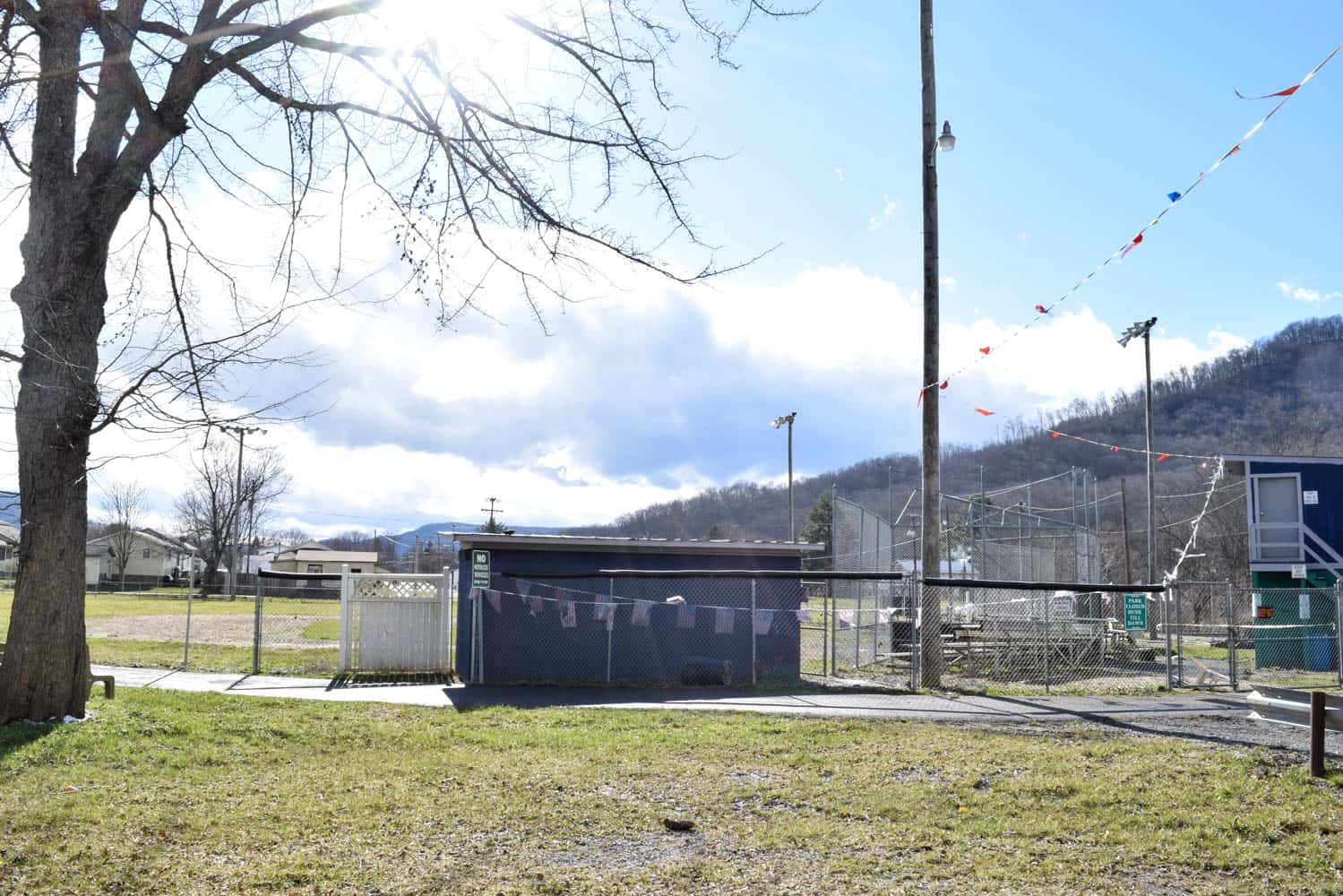
“It’s on the scale of a hurricane or tornado, a major natural event like that that picks everything up and throws it someplace you can’t find it or takes it somewhere you’re never going to see it again.” – Rob Bowen
Rob Bowen was on vacation with his family in Virginia Beach in the morning when he heard an intense rainstorm was approaching Rainelle. He called his employees and told them to leave work. He, his wife and boys drove home that afternoon. Downed trees were blocking the one entrance into Rainelle from the east. Rob turned around to try to find another way into town just as a tree company arrived and to cut the trees away and clear the road.
Meanwhile, at his home on Sewell Mountain, Greg Gill noticed the pond in front of his house was trying to wash away. He ran out to throw the fish strewn across his yard back into the pond. Sewell Mountain, with an elevation of about 3,000 feet, is typically a safe place from flooding.
“You have knowledge when you go paddling all the time, you’re looking at weather events and you’re planning your day around those things. And when I was picking up the fish, I knew it was kind of, I don’t want to say Biblical, but I knew it was going to be historical.”
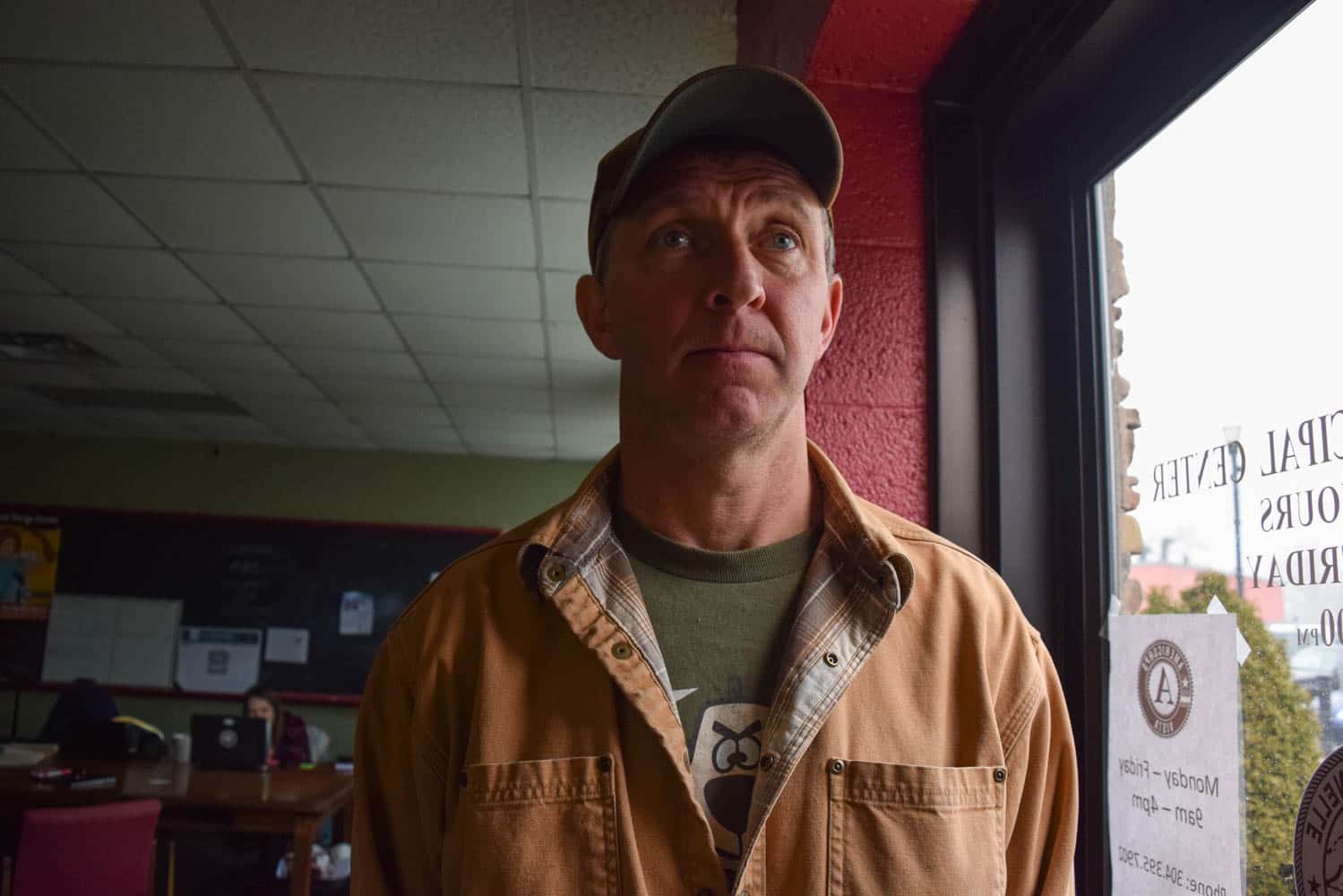
A native to neighboring Summers County, Gill has worked in whitewater and swiftwater rescue his whole life. This kind of water wasn’t for the casual paddler. The oil spills made it sticky, smelly and dark. Propane tanks floated along, waiting to bust. As the water rose over the main road bridge, it formed an undercut — a dangerous current that sucks objects under the bridge and keeps them there.
As it got dark, Gill strapped on his lifejacket and kayaked out through Rainelle. He expected to meet other first responders on the water, but it appeared to him that he was the only one out.
He paddled up to houses, banged on the doors, and yelled in for trapped survivors. Fortunately, Gill wasn’t totally alone. He was met by one other group of independent rescuers, some younger guys without lifejackets but with a boat ready to get people to safety. Gill was worried for them, especially watching them fall into the water.
“There wasn’t a current to sweep them away, thank goodness, but I was expecting to have to do a rescue on them,” he said. “At one point I realized that they were on their own mission and they didn’t really care who I was, and I thought ‘okay, that’s fine, you guys do what you got to do.’ ”
One older woman they found was sitting on a chair, unable to move, with half of her body underwater. After they paddled into her living room, they grabbed her, put her on the boat, and took her to higher ground.
Worried that his truck would soon be underwater, Gill paddled back up to where he parked at Hardee’s. There, he met Bowen.
They recognized each other – they had met briefly before at the doctor’s office. Bowen, owner of Red Star Pro Hardware, wanted to get down to his store on the other end of town to look at the damage. Gill only had his one-person kayak and knew he needed something bigger if they were going to continue doing rescues. He offered to go back up to his house on top of the mountain, grab more boats, and come back down to take Bowen to his store with the condition that if they saw anyone in need, they would become the number one priority.
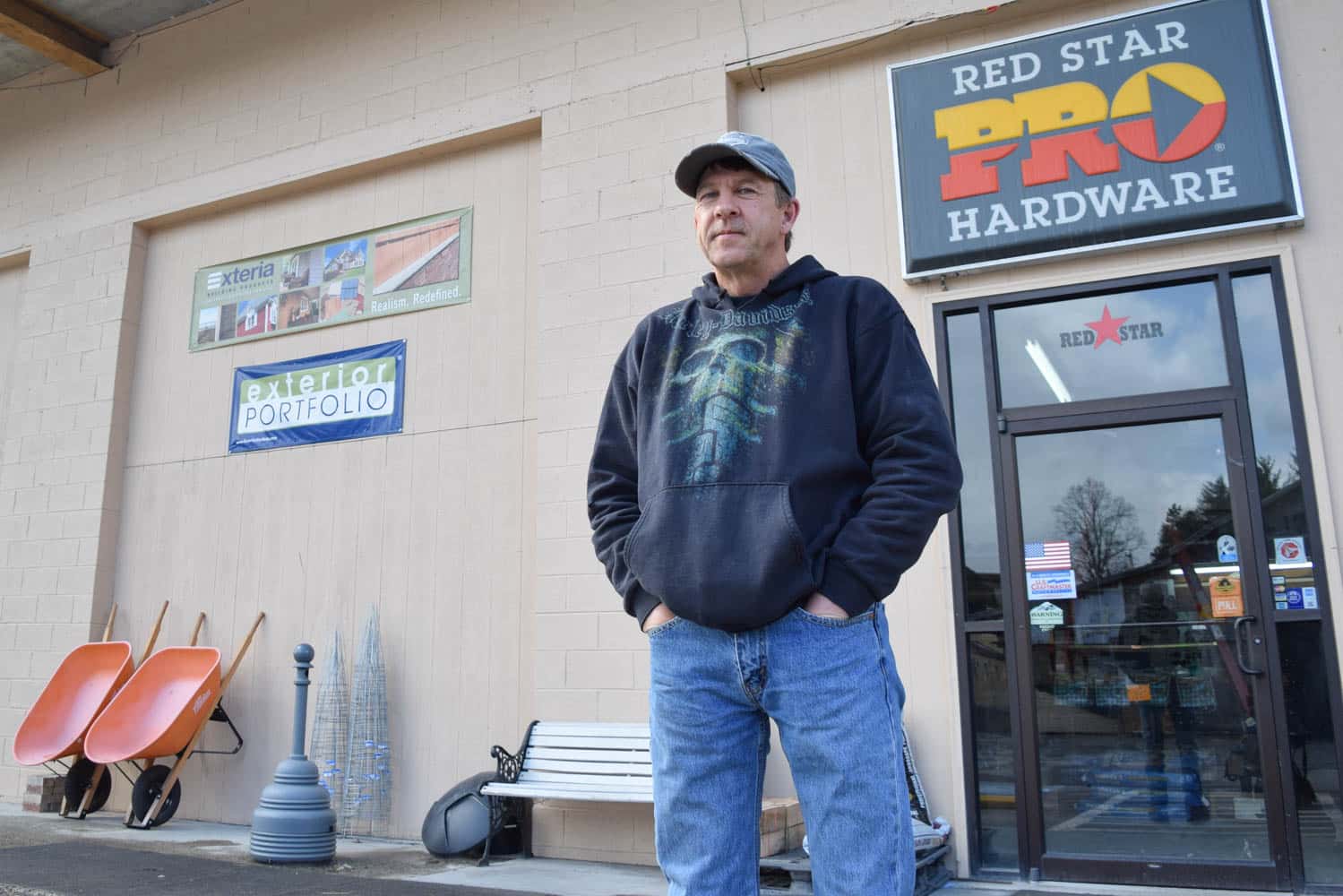
By 10 p.m., Gill and Bowen were out on the water. They stopped by Bowen’s store to find that all of Bowen’s lumber in addition to thousands of dollars of merchandise had floated away. Instantly, the two shifted their focus.
“We could’ve stayed there and tied up a bunch of the material.” Gill said, “He didn’t even suggest it.”
They posted on social media that they were doing rescues, and Bowen’s wife would call them and tell them which houses to go check.
Quickly after they started, Gill and Bowen pulled another elderly woman from her home. She took Bowen’s place in his kayak, and Gill had to leave Bowen behind in the water while he paddle the woman to safety. It became clear that they needed something other than a kayak.
They paddled over to Bowen’s shop, where one of his employees had recently tied up paddleboats behind the building. They rigged up the boat to a tether from Gill’s rescue vest so they could paddle rescued people on the boat. It was their most effective system.
They did rescues until 4 a.m.
“We didn’t get anyone’s names,” Gill said. “We were just trying to get people to higher ground as quickly as we could.”
At one of the houses they came to, they saw a floating body. They left and closed the door so the current wouldn’t take him away.
“I wish I could’ve been there sooner because I could just paddle out there with no effort at all. There were young people living next door to him. All they had to do was go next door and pull him out of that house,” Greg said.
They heard cries from a couple who had floated out of their house and ended up on top of the dugout at the baseball field. Bowen and Gill paddled up and brought those two to safety.
By the end of their night, they saw other responders preparing to get in the water.
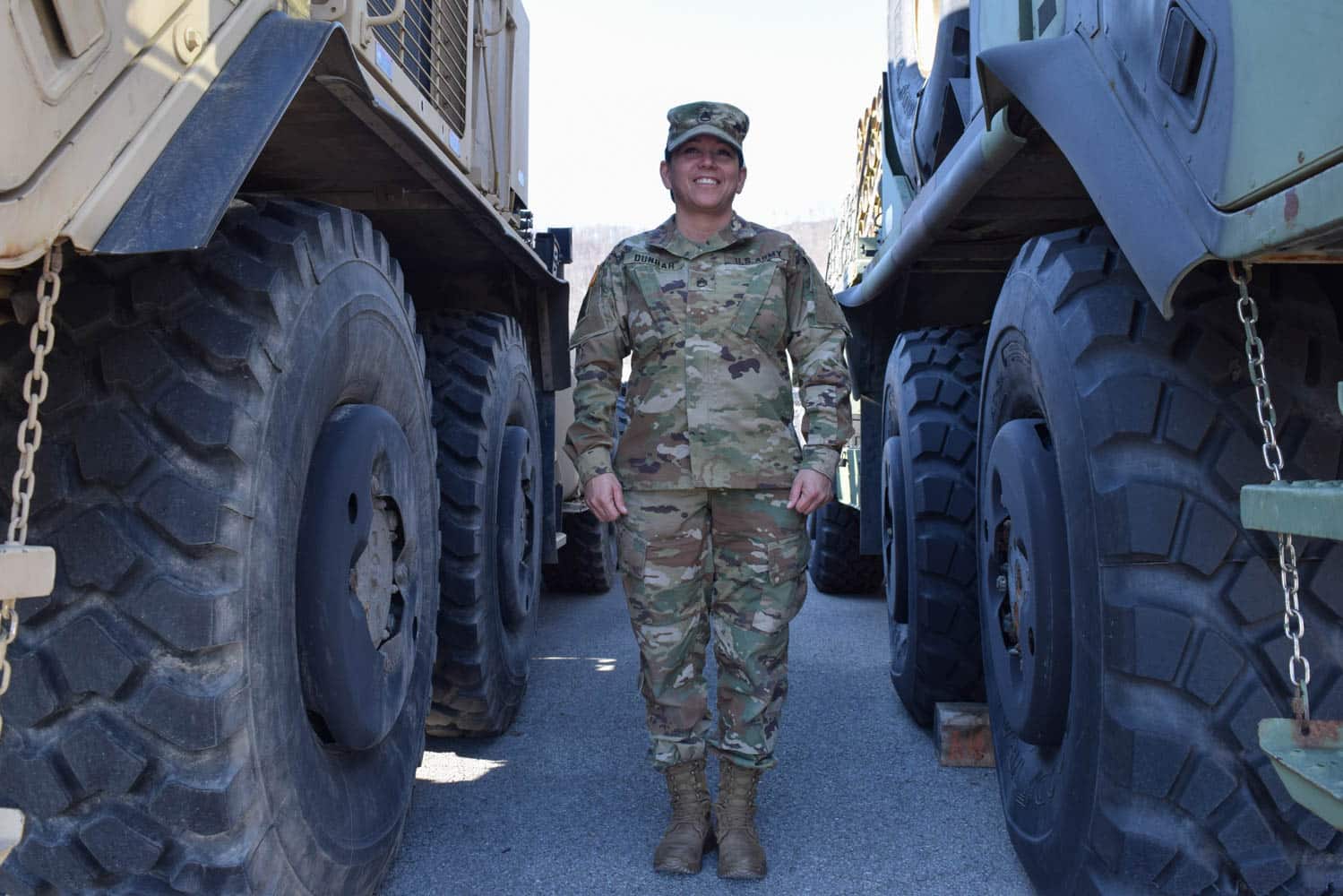
“I don’t think there’s anything to hold this town down, and I think there’s some great leadership in the town that wants to see it thrive or sustain…It’s a town built to carry on.” – Dawn Dunbar
Staff Sergeant Dawn Dunbar jumped out of the truck and into chest-deep water as her unit drove through Rainelle.
Dunbar had driven through the night with a colleague to make it to Rainelle just before dawn on Friday. The Reserves paired up with the West Virginia State Police and Department of Natural Resources teams that would ride boats right up to homes, find out quickly if any survivors were trapped in the home, and then mark the outside of the house depending on what was found – different codes indicated an empty and cleared home versus a death in the home.
“It was basically just getting everybody out safely, being safe, taking care of each other, making sure we were in contact,” Dunbar said. “I’m not saying it was a normal day. It wasn’t a normal day. But, everybody in the community all pitched in together, and the outside resources that came in to pitch in was just amazing.”
Later on Friday, the Reserves activated a palletized loading system truck to transport supplies to nearby communities, like Quinwood, Rupert, and Charmco, which hadn’t been accessible by any other rescuers yet. Once the the National Guard arrived in Rainelle, though, the Reserves were forced to stand down and hand over all responsibilities.
“When you’re told you can’t help, that’s heartbreaking,” Dunbar said, “but then you can take (the uniform) off and go volunteer.”
Holding on
“Our homes are what we have, and we don’t want to give up and lose it, and people hold onto it to the very last second. But they’ve got to realize, you can build another home and you’ve got to let that material stuff go,” Gill said.
Bowen speaks from experience. His hardware store was filled with six-feet of water and mud. The former coal miner had put his life savings in the store when he bought it from his father-in-law.
It was costly to reopen, and Bowen didn’t think he could afford the time and money, but with the help of volunteers, his business was back up and running within a few months.
“People lost everything and people lost lives. But I think it’s pulled a lot of people closer together,” Bowen said.
Lives could have been saved if the town was educated on an evacuation plan that encouraged people to leave immediately instead of waiting it out, Gill said.
“If it happens again and I’m near here, I certainly won’t wait for anybody to call me. I’ll just come down, start paddling around myself.”
Sean Wolford currently works as an emergency management director in neighboring Nicholas County. Greg Gill works at Snowshoe Mountain in Pocahontas County. Rob Bowen’s Red Star Pro Hardware has recovered and is still in business. Dawn Dunbar is still in the U.S. Army Reserves’ 811th Ordnance Company in Rainelle. All live in Greenbrier County.
About this series: West Virginia University senior Jennifer Skinner interviewed 19 people in Rainelle, West Virginia to record their stories of the flood from June 23, 2016.



